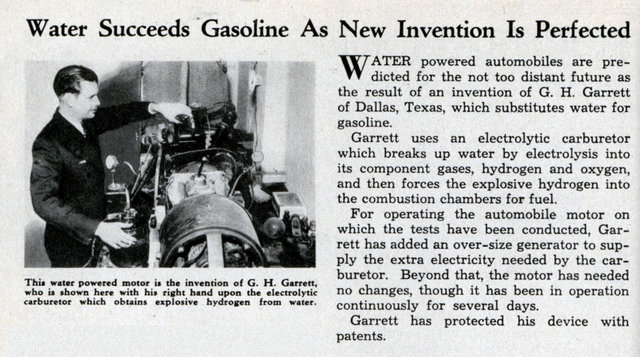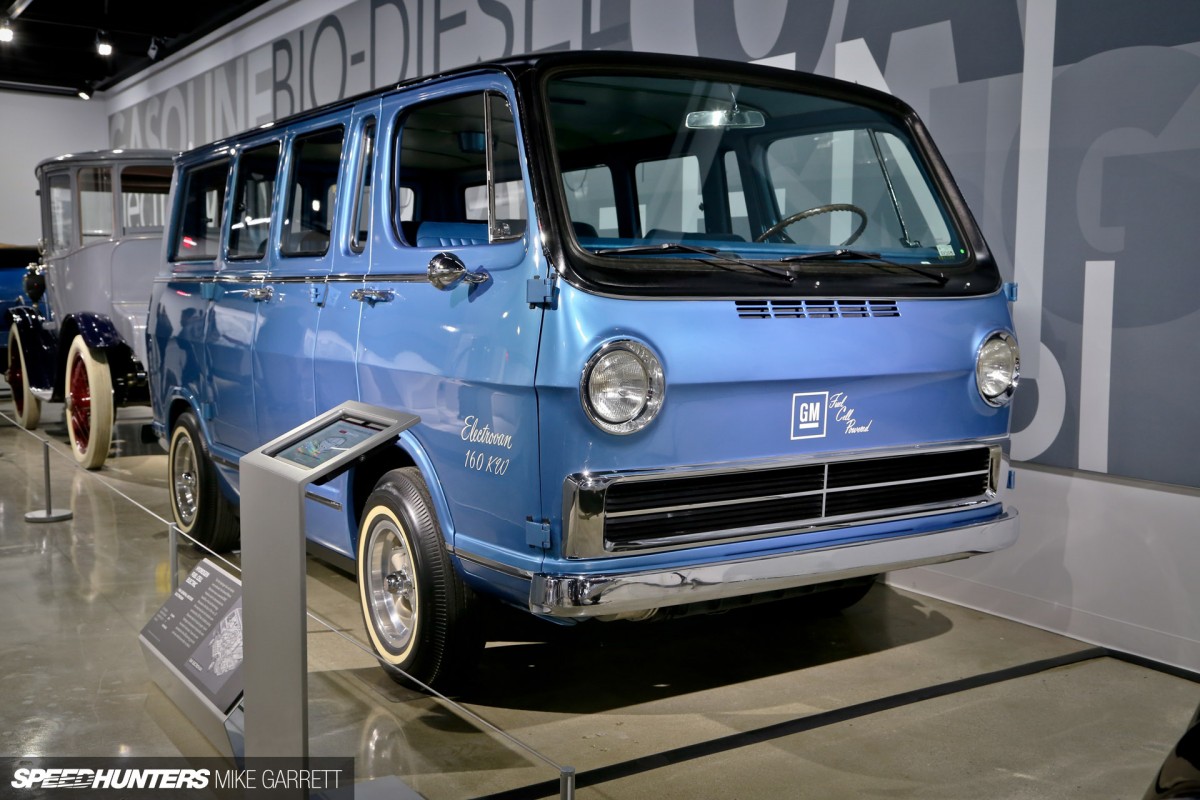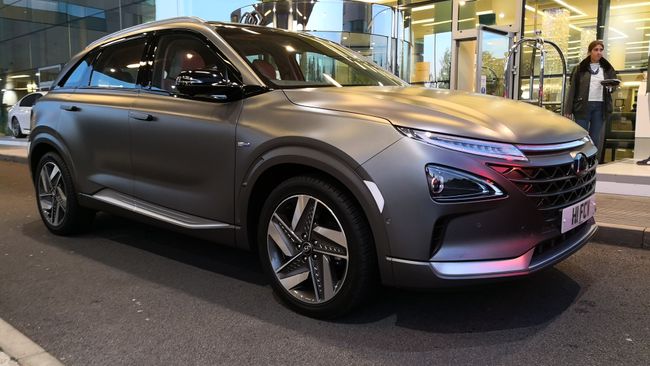
Cars that run on water? We’ve all heard about alleged cover-ups of clean, pollution free engines and oil industry plots to bury them and discredit inventors. What about electric cars? Are they as clean as they we’re being told? Is there a better alternative? If so, why isn’t it being promoted? As always, politics and economics, not the environment, is the issue.
by Martin Harris 21/7/19

Way back in the 1930s, the genius who invented the traffic light came up with a less well known but even more significant invention; the Electrolytic Carburetor. This allowed one’s formerly gasoline powered “flathead Ford” to run on hydrogen extracted from water. It worked, but had potential issues relating to hydrogen embrittlement of the cast iron with engines of the day were composed, among other things.
“Dad” Garrett was already famous for his work. In 1920 he set up WRR in Dallas, the world’s first municipal radio station, and was its first announcer. He was the first man to build a radio in his car, and he developed radio transmission from the car for police use. He also invented an automatic electric traffic signal, possibly the nation’s first.
In other words, he was no crackpot.
Dallas Morning News – September 8, 1935
https://www.electricitybook.com/electrolytic-carburetor/
Dallas-ite Patents Invention Which He Claims
Substitutes Water for Gasoline as Fuel
C.H. Garrett, Dallas inventor, gave a private demonstration Saturday of a recently patented contrivance which he said substituted water for gasoline as fuel for internal combustion engines.
He said it broke up the water by electrolysis into its component gases, oxygen and hydrogen, using the highly explosive hydrogen for fuel in the motor cylinder.
The working model operated a four-cylinder engine for several minutes in the demonstration, at varying speeds and with several starts and stops. Garrett said he had operated the engine continuously for more than forty-eight hours.
The inventor said the idea itself was not new. He explained that difficulty had been encountered heretofore in attempts to store the dangerously inflammable hydrogen. He claimed to have AVOIDED that trouble by making and exploding the gas in the SAME PROCESS without a storage chamber in which the flames from the motor cylinders might react.
Water, he explained, is broken down into its component gases by passage of an electric current through it from electrodes immersed in the water. Hydrogen collects at the negative pole and oxygen at the positive. The hydrogen, Garrett said, is MIXED WITH AIR (78% nitrogen and other gases…Vanguard) and introduced DIRECTLY INTO THE CYLINDERS.
The inventor said he had been working on the device for eight years, assisted by his father, Henry Garrett, traffic signal engineer for the city of Dallas, inventor of the traffic signal system, now in use here and holder of several patents on such contrivances.
Garrett said attachment of the electrolytic carburetor and installation of a generator of about DOUBLE normal capacity to furnish power for the breaking down of the water were the only changes needed to convert a gasoline burning automobile into a WATER BURNER!
He said the electrolysis chamber would have to VARY IN SIZE with the size of the motor used. One of ABOUT A QUART CAPACITY being big enough for the ordinary automobile.
He claimed instantaneous starting in any weather, elimination of fire hazards, cooler motor operation and fulfilling of all motor requirements in power and speed.
The reader can view Garret’s patent in PDF HERE
And much greater detail can be found HERE

The world, however, was not yet ready for hydrogen. I guess the Hindenburg was still fresh on the minds of many, and gas was cheap and flowed like tapwater.
Gasoline (petroleum), thus dominated road transportation throughout the 20th century. Now, in the early 21st century, electric power is being promoted as the better choice, ostensibly for the betterment of the environment. It is, however, not nearly environmentally friendly as claimed. The batteries are heavy, they degrade in performance rapidly, and prohibitively expensive to replace. More significantly, they are dirty to manufacture and to dispose of. In many ways, petrol and diesel engines are actually cleaner and more efficient over the lifespan of the vehicle.
There is, however, an alternative. It is on offer now, and has in fact been available on a small scale for some time. Hydrogen Fuel Technology. Imagine a car that breathes in polluted air, and pumps out clean air and water vapour. To good to be true? Well, Honda, Toyota, and more recently, Hyundai, have clearly demonstrated otherwise. And it’s basically a development of the same principle patented by Garrett in the early 1930’s!
Nor is it exactly a “new” alternative, as GM’s 1966 Hydrogen Cell “Electrovan” demonstrates;

There are in fact two forms of Hydrogen motor: Internal Combustion and Cell. The Hydrogen cell option is the more efficient.
Why Don’t We Just Run Internal Combustion Engines on Hydrogen?
There are two major problems with a hydrogen internal combustion engine. First, hydrogen is not as energy-dense as other fuels, meaning that you need a whole lot of it to do a little bit of work. Couple that with the inherent inefficiency of a piston engine (at best, you’re only turning about 30 percent of the fuel’s energy into forward motion), and you’ve got a recipe for disappointment.
The second problem? When you combust hydrogen, you get other emissions besides water vapor. Mainly, you get NOx, the toxic emission at the heart of the Volkswagen diesel emissions cheating scandal. If you’re looking for a clean alternative to gasoline, hydrogen’s NOx emissions take it out of the running.
The answer? Use hydrogen in a fuel cell to generate electricity. Fuel cells are far more efficient than internal combustion engines, and a hydrogen fuel cell has cleaner emissions than an internal-combustion hydrogen engine.
https://www.roadandtrack.com/new-cars/car-technology/a25712588/why-dont-we-burn-hydrogen-instead-of-gasoline/
So, why are we still being having battery/plug-in EVs “pushed” onto us as the Clean, Green, Save-The-Planet vehicle technology of choice?
Why Are Car Manufacturers Ignoring Hydrogen Engines?
The answer lies with a battle between the Super-Powers.
Oil versus Rare Earth. The US and the Middle East versus China and Russia.
The following images are not scenes of Mordor. They are Chinese Rare Earth mines:



Clearly, the EV agenda has nothing to do with cleaning up the planet, and everything to do with keeping China’s lucrative rare earth industry humming along. The Electric car is really no cleaner than it’s petroleum-burning predecessor. For an eye-opener, read THIS REPORT
While the world argues over gas-guzzlers versus volt-guzzlers, the real clean option barely gets more than a casual glance. The situation appears to have changed little since 1932.
If I had to put money on Gas, Electric or Hydrogen, the latter option wins hands down in this authors opinion.
The critical reader may by now be thinking this hydrogen option is all a little “too good to be true”. And yes, there are, as with everything, there are drawbacks to be considered. Like EV’s there are “hidden” environmental questions: Obviously, one matter is the source of the hydrogen:
The carbon emissions associated with hydrogen-fuel production depend on the source of hydrogen (typically, natural gas or water), the process used to extract it, and the source of the energy driving that process. Currently, most hydrogen is made by converting natural gas into hydrogen gas and carbon dioxide. The hydrogen can be made either at a central facility and trucked to a filling station or, if natural gas is available on-site, right at the station. However, hydrogen can also be produced from sources of energy that are lower in carbon than natural gas. Electricity from solar or wind power, for example, can be used to split water into hydrogen and oxygen through electrolysis. Another low-carbon source of hydrogen is methane gas from landfills and sewage treatment facilities, provided that methane leakage is minimized
https://www.ucsusa.org/sites/default/files/attach/2014/10/How-Clean-Are-Hydrogen-Fuel-Cells-Fact-Sheet.pdf
So while hydrogen sourced from Fracking may cause a frown (earthquakes aren’t fun), hydrogen from sewage treatment, landfills (and potentially from livestock also) is a good idea. Regarding carbon: The author believes that CO2 isn’t the “emergency” issue that the IPCC and the UN are claiming. On the contrary, the current CO2 level globally is approx. 400ppm.

Since vegetation relies on CO2 to thrive and global CO2 levels have been considerably higher (prior to the last two Ice ages) I believe we should be more concerned with environmental pollution from such industrial toxins as depicted in the Rare Earth mining images above. Or plastic bags, herbicides and pesticides. The connection between CO2 and global warming is tenuous at best.
As most of the complaints against Hydrogen ITC and HC engines are carbon related, this author believes it’s a “non-issue”. But for those that are concerned about their “carbon footprint”, read on….
Of gasoline, electric, and hydrogen engines, only the latter actually cleans the environment as it operates!
Hyundai’s NEXO hydrogen car cleans the air as it goes
Hyundai claims that if just one NEXO is driven for an hour, it has the potential to purify 26.9 kilograms of air, which it says is the same amount as 42 adults breathe in 60 minutes. The car producer also claims that if there were 10,000 NEXOs on the road it would subsequently have a carbon-reducing effect akin to planting 60,000 trees. Hyundai had their filters, and the NEXO, on show at UCL so you could see just how grubby the things become in a pretty short space of time.

So those worried about CO2 can rest easy with their hydrogen cell vehicle.
The conclusion therefore, is that we should turn our backs on the gas vs. electric car debate and put our support behind Hydrogen Cell technology as the way forward for environmentally friendly motoring in the future. Dad Garret was on the right track all those years ago!
SEE ALSO:









